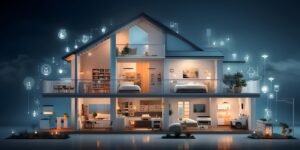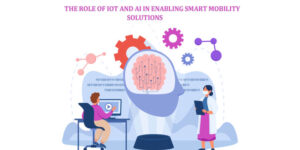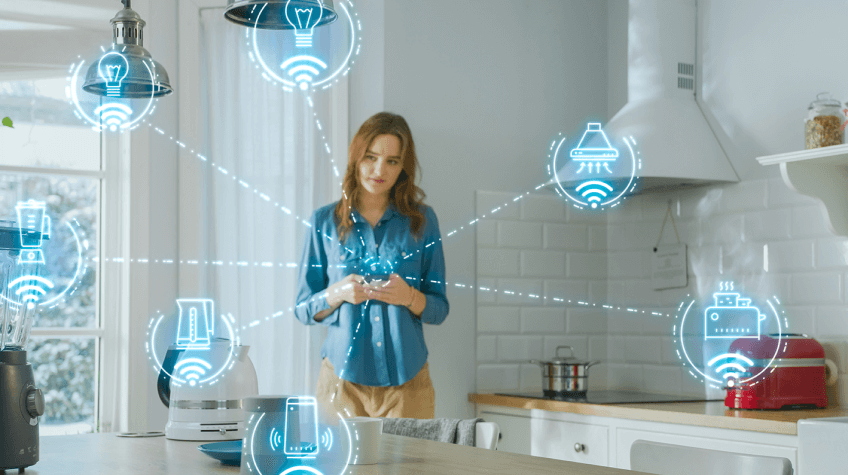
The way we live in our homes is undergoing a revolutionary transformation, thanks to the advent of smart home technology. From intelligent thermostats to voice-controlled lighting, the integration of technology into our living spaces is changing the definition of modern living. In this article, we will delve into the intricacies of the smart home revolution, exploring the core technologies, key components, advantages, challenges, and future trends that define this technological paradigm shift.
Introduction
1. Definition of Smart Home
The term “smart home” refers to a residence that uses smart devices and technology to enhance efficiency, security, and overall living experience. These homes are equipped with interconnected devices that can be remotely monitored and controlled.
2. Rapid Growth of Smart Home Technology
In recent years, there has been a rapid proliferation of smart home technology. This growth is attributed to advancements in core technologies such as the Internet of Things (IoT), artificial intelligence (AI), and voice recognition.
The Core Technologies
1. Internet of Things (IoT)
At the heart of smart homes lies the Internet of Things, a network that enables devices to communicate and share data. This interconnectedness allows for seamless automation and control.
2. Artificial Intelligence (AI)
AI plays a pivotal role in smart homes, enabling devices to learn and adapt to user behavior. This intelligence enhances the efficiency and customization of automated processes.
3. Voice Recognition Technology
Voice recognition technology adds a layer of convenience to smart homes, allowing users to control various smart home devices using voice commands. This technology has become a staple in modern smart home ecosystems.
Key Components of a Smart Home
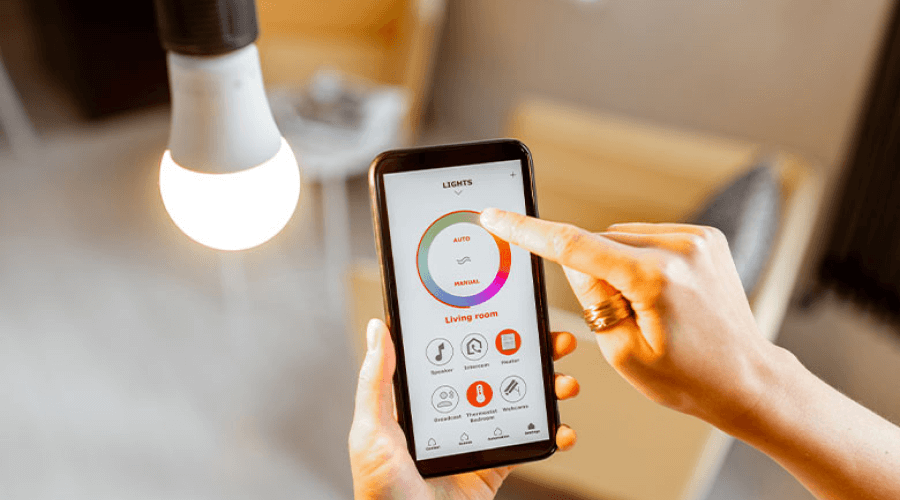
1. Smart Lighting
Smart lighting systems offer not only energy efficiency but also customizable ambiance. Users can control brightness and color, creating a personalized and comfortable living environment. Additionally, the integration of LED lighting products further enhances the overall safety and functionality of these smart security systems.
2. Home Security Systems
Smart security systems provide real-time monitoring and remote control, enhancing the safety of homes. Features like smart cameras, doorbell cameras, and automated locks contribute to comprehensive security.
3. Smart Thermostats
Smart thermostats optimize energy consumption by learning user preferences and adjusting temperatures accordingly. This not only saves energy but also reduces utility costs.
4. Smart Appliances
From refrigerators to washing machines, smart appliances are equipped with features like remote control and energy consumption tracking. These appliances contribute to a more efficient and connected home.
Advantages of Smart Homes
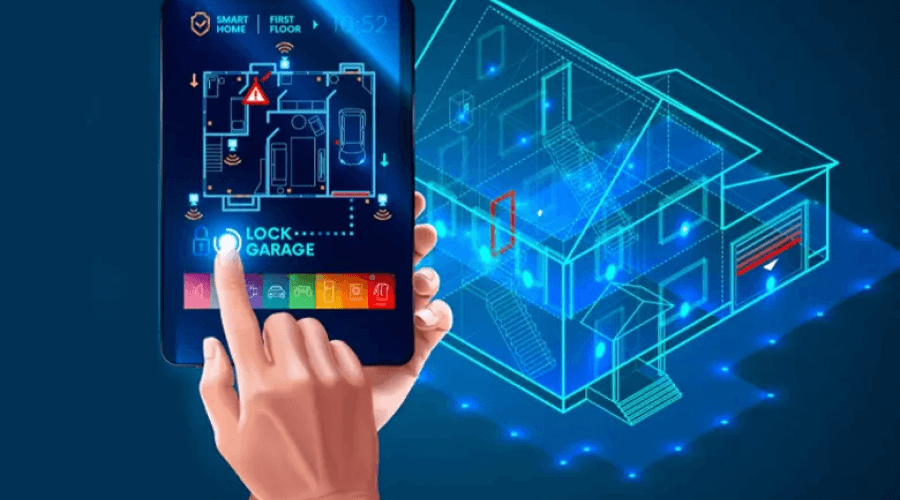
1. Energy Efficiency
One of the primary advantages of smart homes is energy efficiency. Automated systems ensure that energy is used judiciously, leading to reduced environmental impact and lower utility bills.
2. Enhanced Security
Smart security systems provide homeowners with peace of mind by offering real-time surveillance and immediate alerts. This enhanced security is a key factor driving the adoption of smart home technology.
3. Convenience and Comfort
The convenience of controlling various aspects of home automation through a smartphone or voice commands adds a new dimension to comfort and ease of living.
4. Accessibility
Smart home features cater to individuals with disabilities, making homes more accessible. From voice-activated controls to automated door systems, smart homes prioritize inclusivity.
Challenges and Concerns
1. Privacy Issues
The interconnected nature of smart homes raises concerns about data privacy. Users must be vigilant about securing their devices and data to prevent unauthorized access.
2. Initial Costs
While the long-term benefits are evident, the initial costs of implementing smart home technology can be a barrier for some. Educating consumers about the potential savings can help overcome this hurdle.
3. Compatibility Concerns
Ensuring that all smart devices are compatible and work seamlessly together can be a challenge. Industry standards and increased interoperability are essential to addressing this concern.
Future Trends in Smart Home Technology
1. Integration with Wearables
The integration of smart homes with wearable devices is a growing trend. This allows users to monitor and control their home environment directly from their smartwatches or other wearables.
2. Sustainable Smart Homes
The future of smart homes involves a focus on sustainability. Energy-efficient devices, renewable energy integration, and eco-friendly materials are expected to play a more significant role.
3. Expansion of Smart Cities
The concept of smart homes is expanding to smart cities, where interconnected systems optimize not only individual homes but entire urban landscapes.
How to Make Your Home Smarter
Step 1: Assess Your Needs
Identify the areas of your life where automation could bring convenience. Whether it’s energy savings, security, or daily routines, understanding your needs is the first step.
Step 2: Choose Compatible Devices
Research and choose smart devices that are compatible with each other. This ensures a seamless and interconnected smart home experience.
Step 3: Set Up a Central Hub
A central hub or smart home controller acts as the brain of your connected home. It allows you to manage and control all your devices from a single point.
Success Stories
1. Real-life Examples of Smart Homes
Explore real-life success stories of individuals who have embraced smart home technology and transformed their living spaces for the better.
2. Impact on Daily Living
Understand how the integration of smart home technology has a tangible and positive impact on the daily lives of individuals and families.
The Human Touch in Smart Homes
1. Balancing Automation and Personalization
Finding the right balance between automated processes and personalized preferences ensures that technology enhances, rather than replaces, the human touch in our homes.
2. User-Friendly Interfaces
User-friendly interfaces play a crucial role in ensuring that individuals of all ages and technological backgrounds can easily navigate and control smart home systems.
Overcoming Resistance to Change
1. Addressing Privacy Concerns
Implementing robust security measures and educating users about privacy settings can help alleviate concerns related to data security.
2. Demonstrating Cost Savings
Highlighting the long-term cost savings associated with energy-efficient systems and reduced utility bills can sway skeptics and encourage adoption.
The Role of Governments and Regulations
1. Privacy Regulations
Governments play a role in establishing and enforcing privacy regulations to protect consumers in the rapidly evolving landscape of smart home technology.
2. Incentives for Smart Home Adoption
Governments can incentivize smart home adoption through tax breaks, subsidies, or other initiatives that make the initial investment more attractive.
Case Study: A Day in a Smart Home
1. Morning Routine
Explore how a smart home can enhance the morning routine, from waking up to preparing breakfast, with automated lighting, climate control, and more.
2. Evening Automation
Witness the convenience of automated evening routines, from adjusting lighting for a cozy atmosphere to setting security systems before bedtime.
The Smart Home Ecosystem
1. Interconnected Devices
Understand how the smart home ecosystem relies on devices working together seamlessly to create a holistic and integrated living experience.
2. Compatibility Standards
The establishment of compatibility standards is crucial for ensuring that devices from different manufacturers can communicate effectively, reducing compatibility concerns.
Evolving Smart Home Apps
1. User-Friendly Interfaces
The continuous evolution of smart home apps includes improvements in user interfaces to make them more intuitive and accessible for a broader audience.
2. Constant Updates and Improvements
Regular updates and improvements to smart home apps ensure that users can benefit from the latest features and security enhancements.
Also Read: How to Develop a Smart Home App: A Comprehensive Guide
Conclusion
➪ Recap of Smart Home Benefits
In conclusion, the smart home revolution brings numerous benefits, from energy efficiency to enhanced security and convenience. As technology continues to advance, the potential for improving our living spaces is limitless.
➪ Future Prospects
Looking ahead, the future of smart homes holds exciting possibilities, including increased integration with wearables, a focus on sustainability, and the expansion of smart cities.
FAQs
Q1. Are smart homes only for tech-savvy individuals?
No, smart homes are designed to be user-friendly, and many devices come with intuitive interfaces suitable for individuals of all technological backgrounds.
Q2. How can smart homes contribute to energy savings?
Smart homes optimize energy consumption by automating processes such as lighting, heating, and cooling based on user preferences, resulting in significant energy savings.
Q3. What measures can be taken to ensure the privacy of smart home users?
Users can enhance privacy by setting up secure passwords, regularly updating firmware, and being mindful of the data-sharing settings on their smart devices.
Q4. Are smart home devices compatible with each other?
Compatibility varies, but choosing devices from reputable manufacturers and checking for compatibility standards can help ensure seamless integration.
Q5. Can smart homes be retrofitted into existing homes?
Yes, many smart home devices are designed to be easily integrated into existing homes, allowing homeowners to gradually adopt smart technology.
Incorporating technology into our homes is not just a trend; it’s a transformative journey that enhances our daily lives. The smart home revolution is not about replacing the human touch but augmenting it, creating living spaces that are more efficient, secure, and comfortable than ever before.

